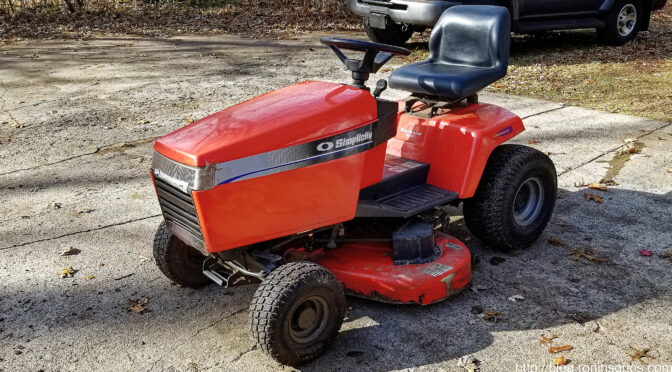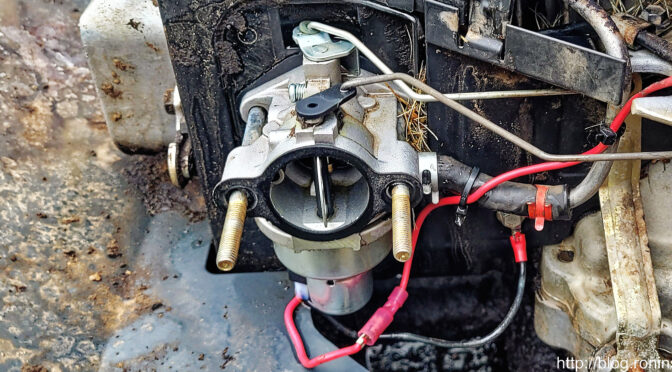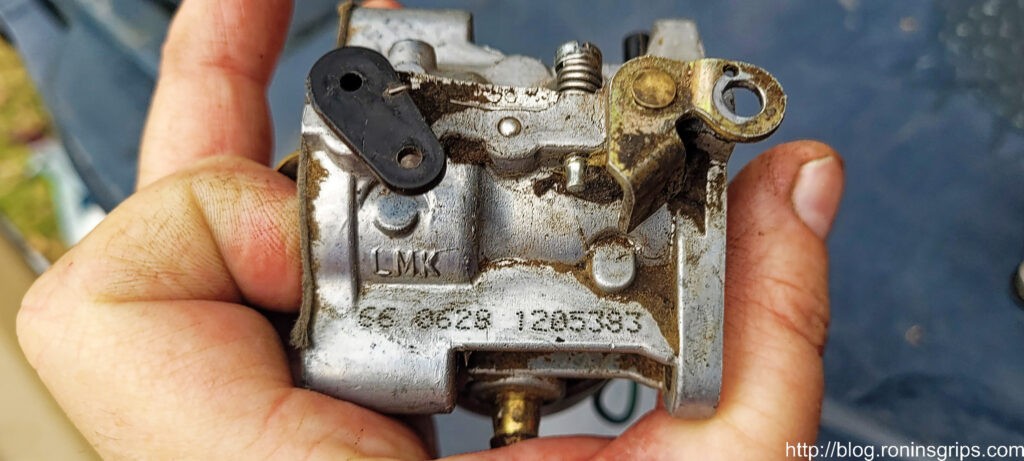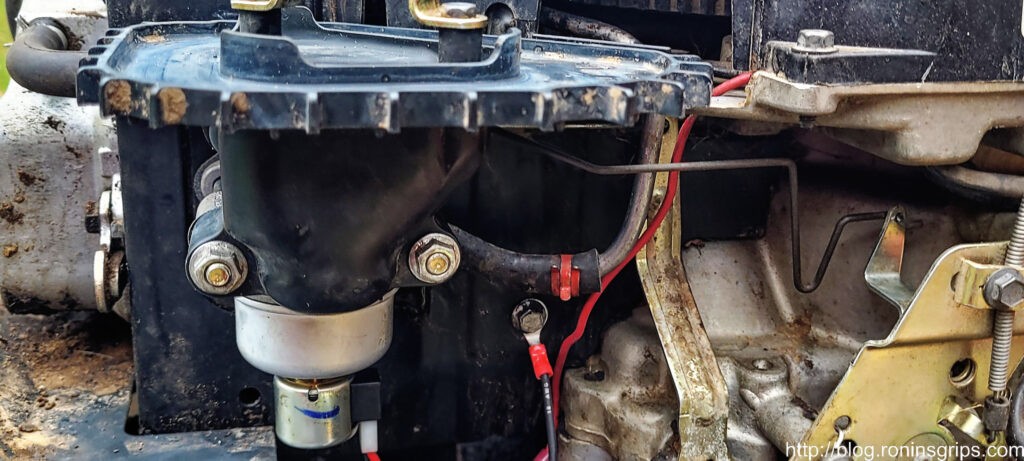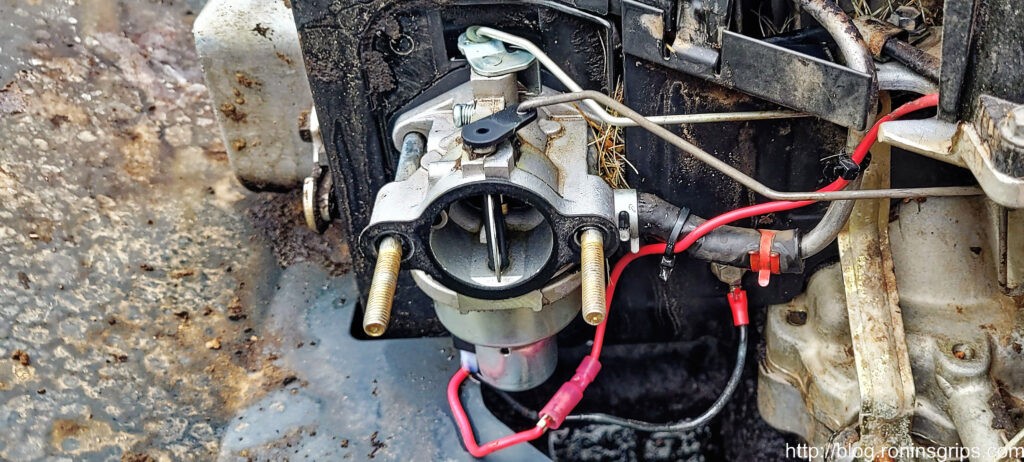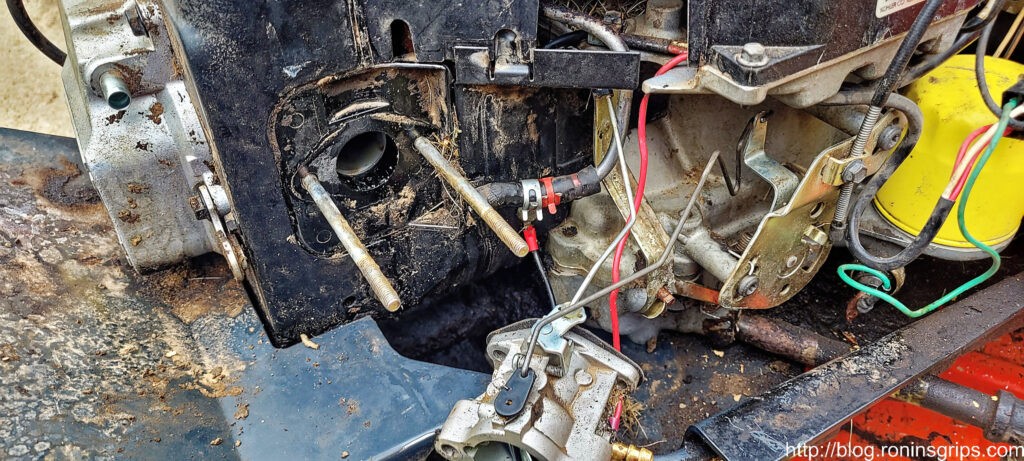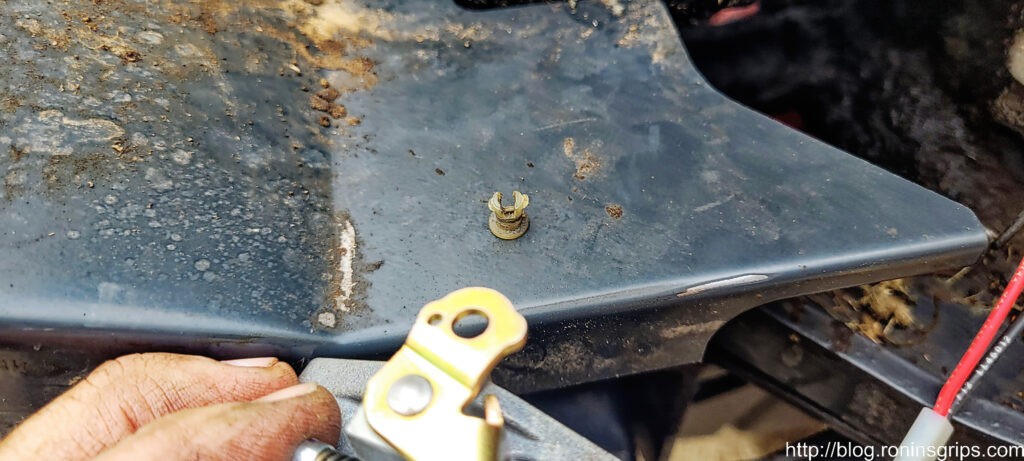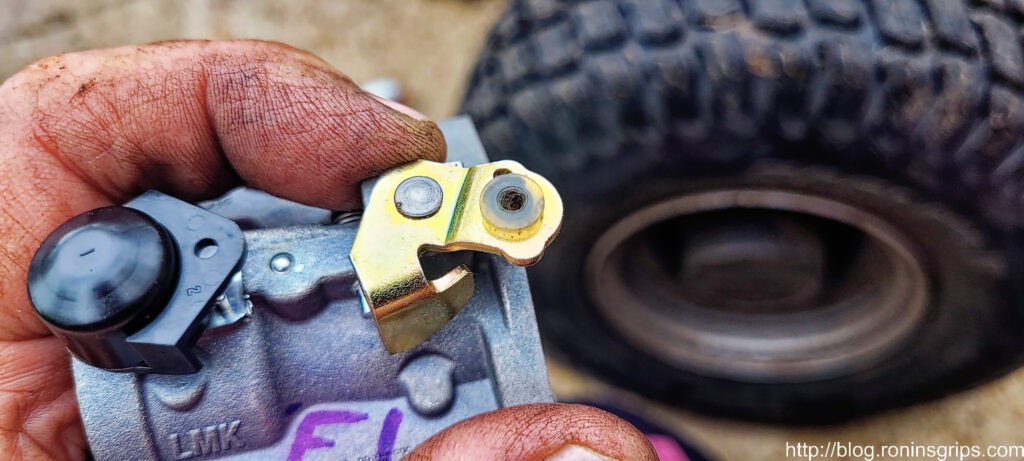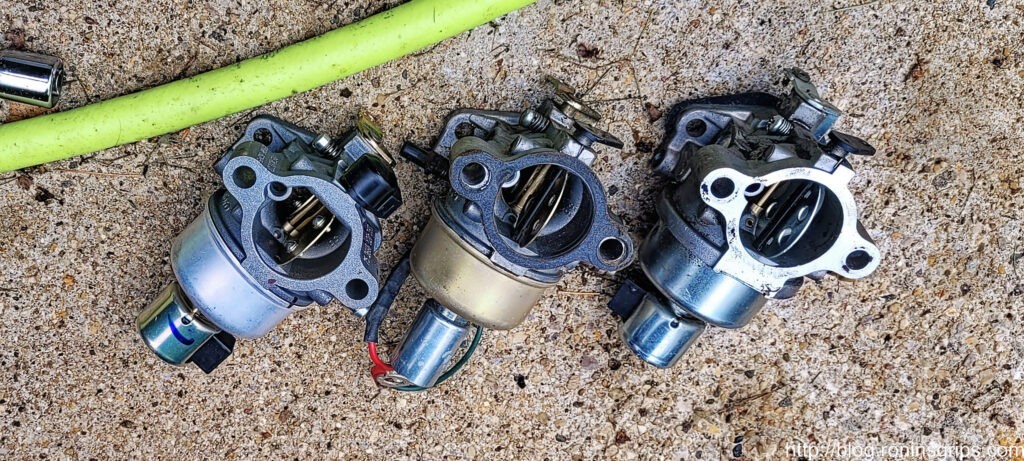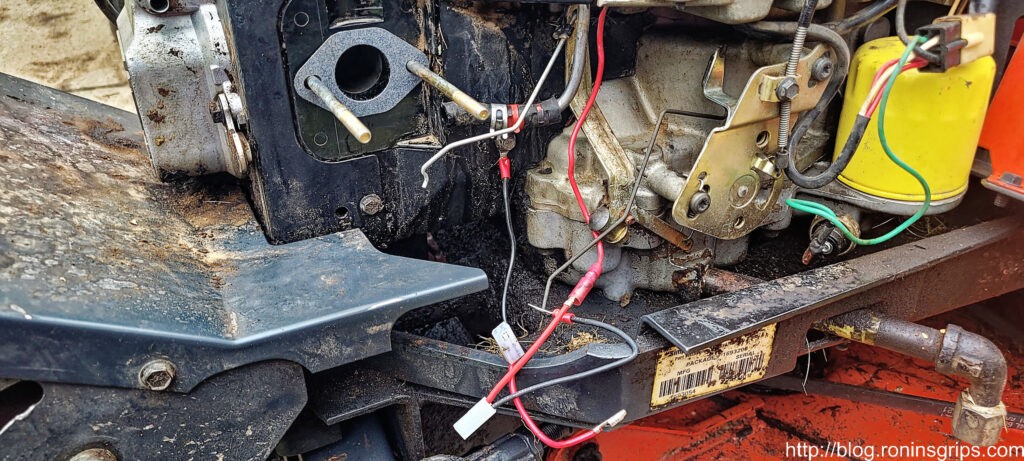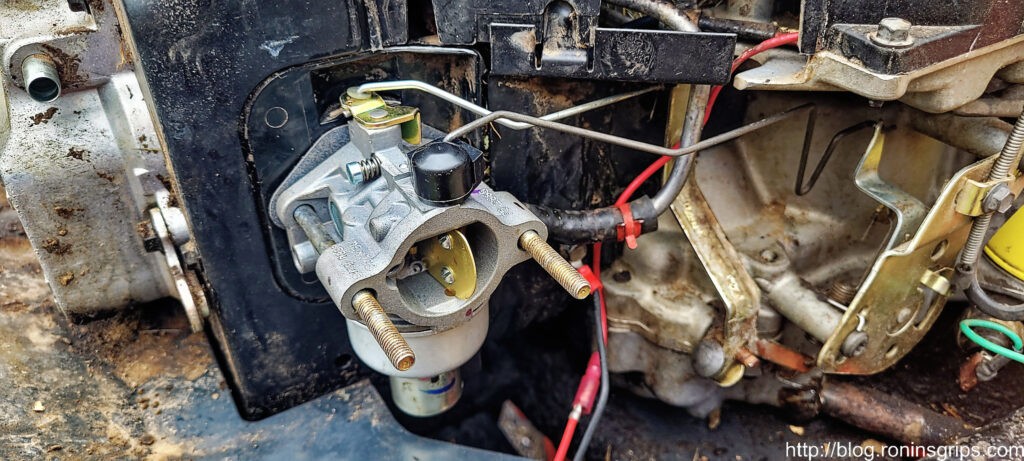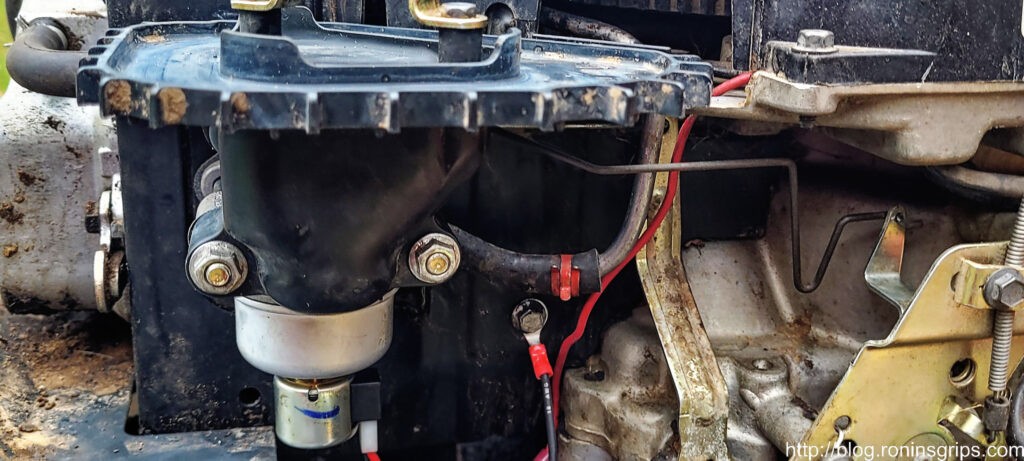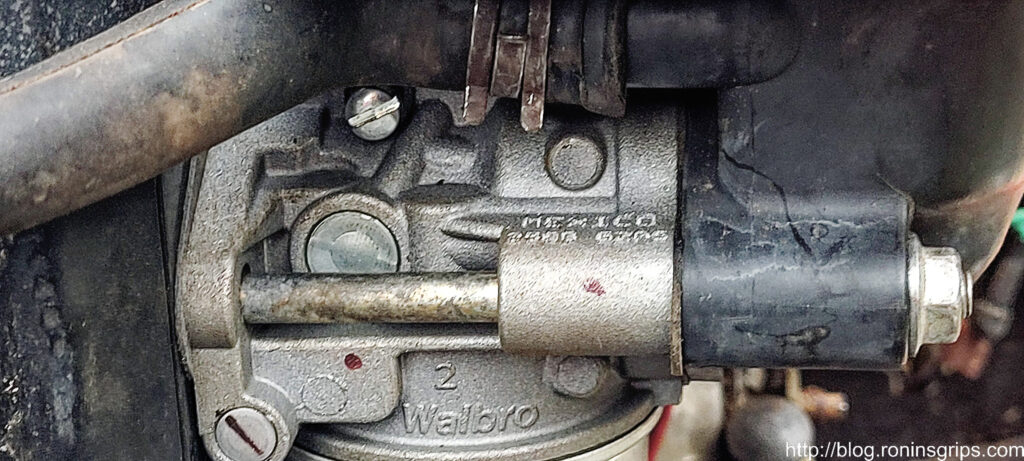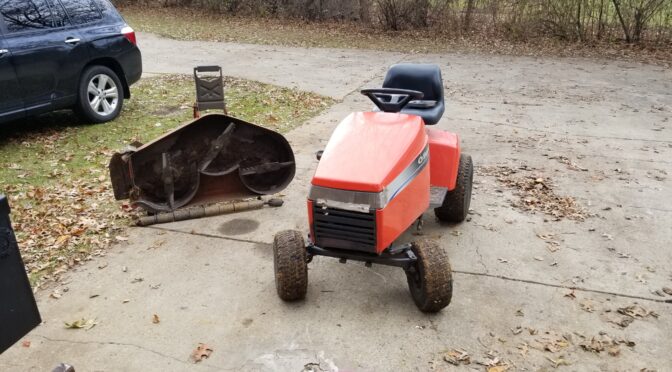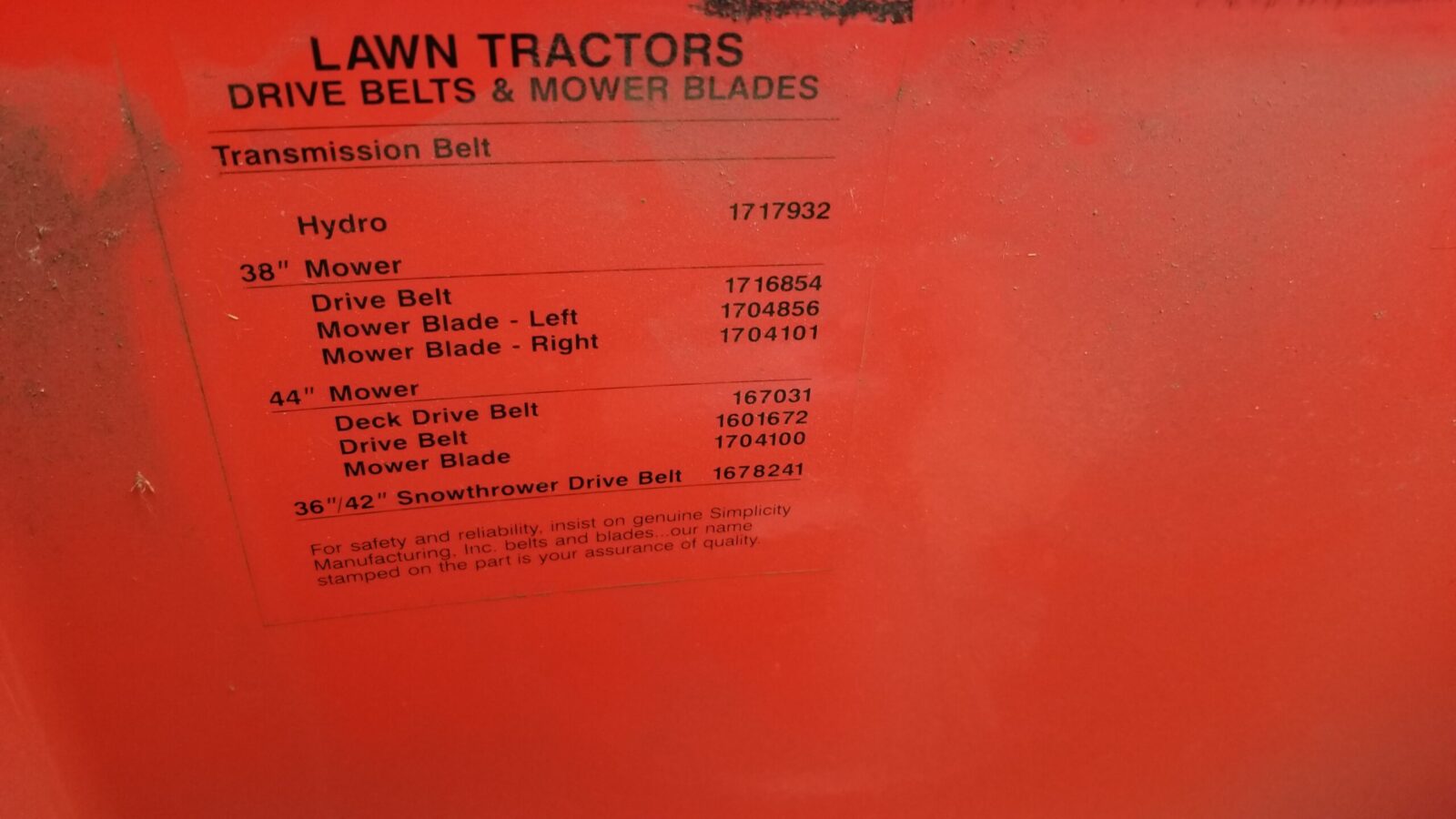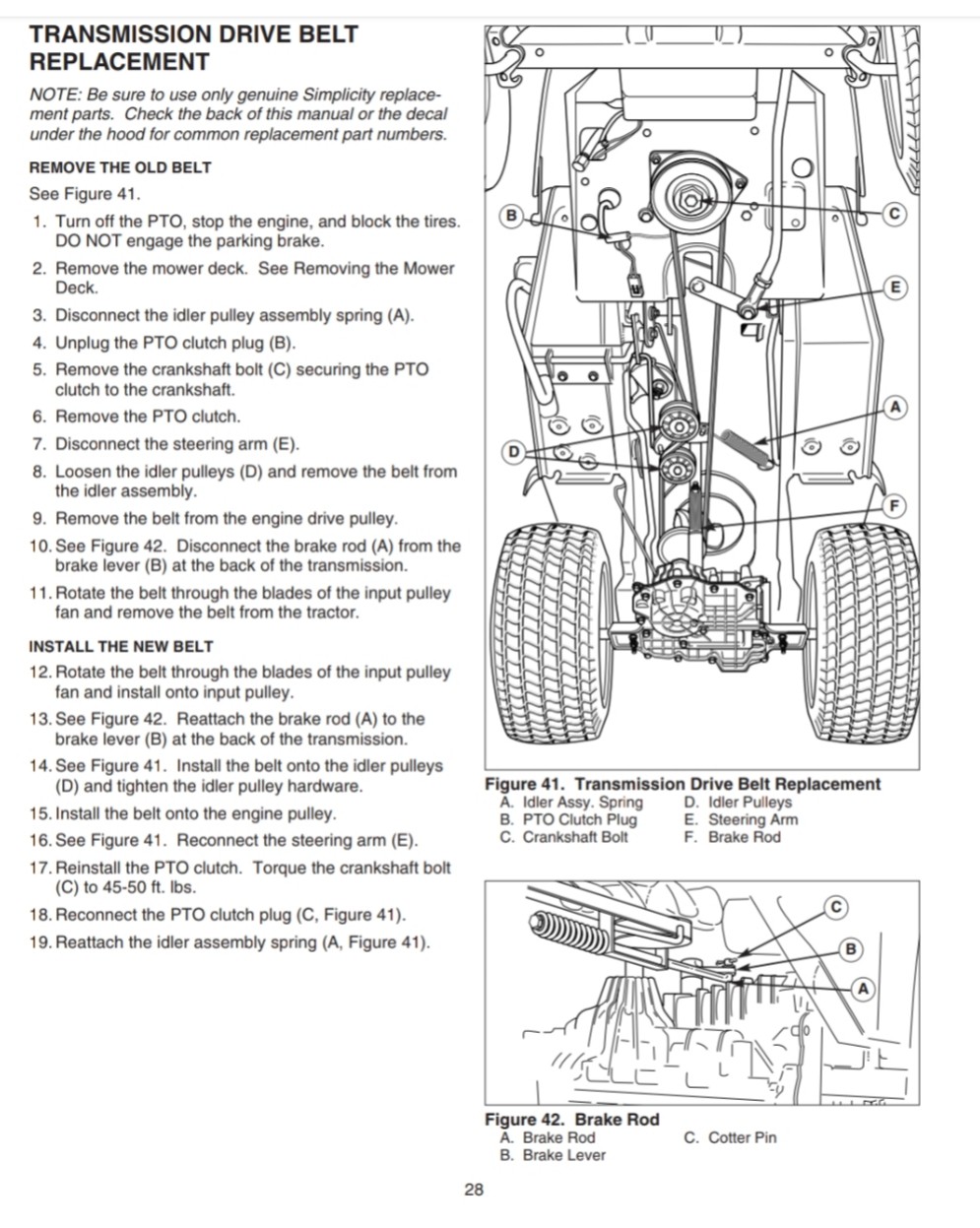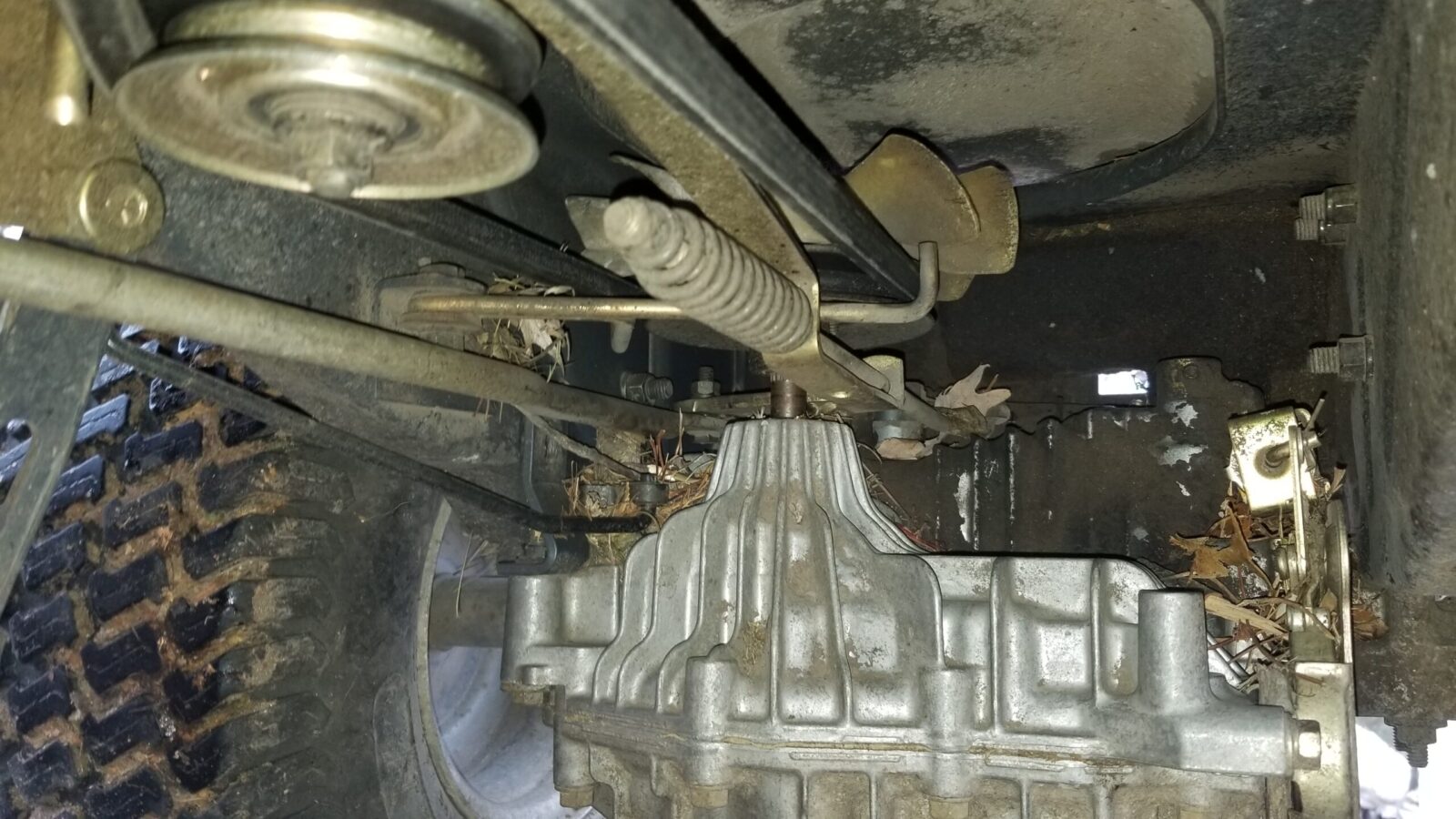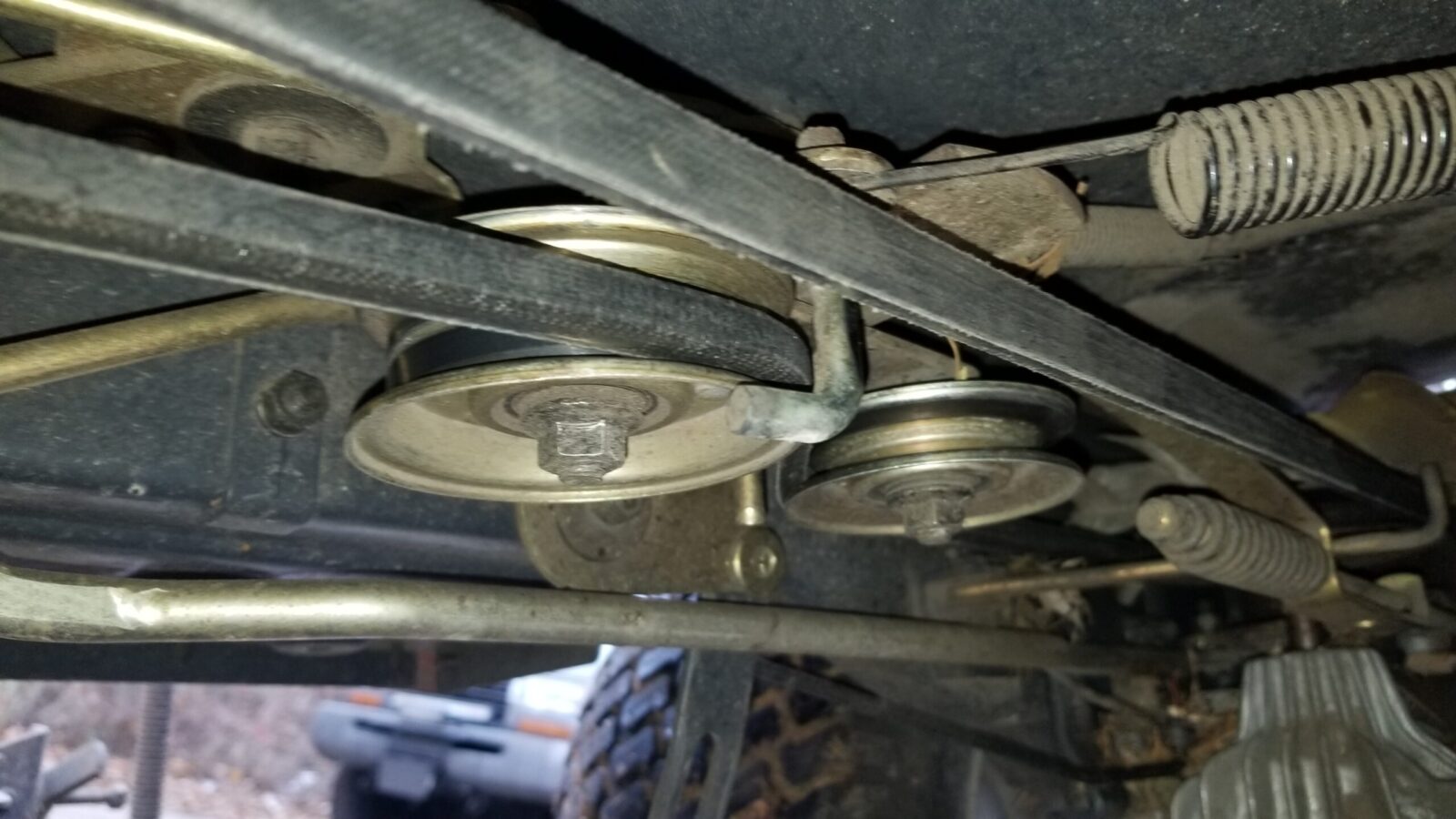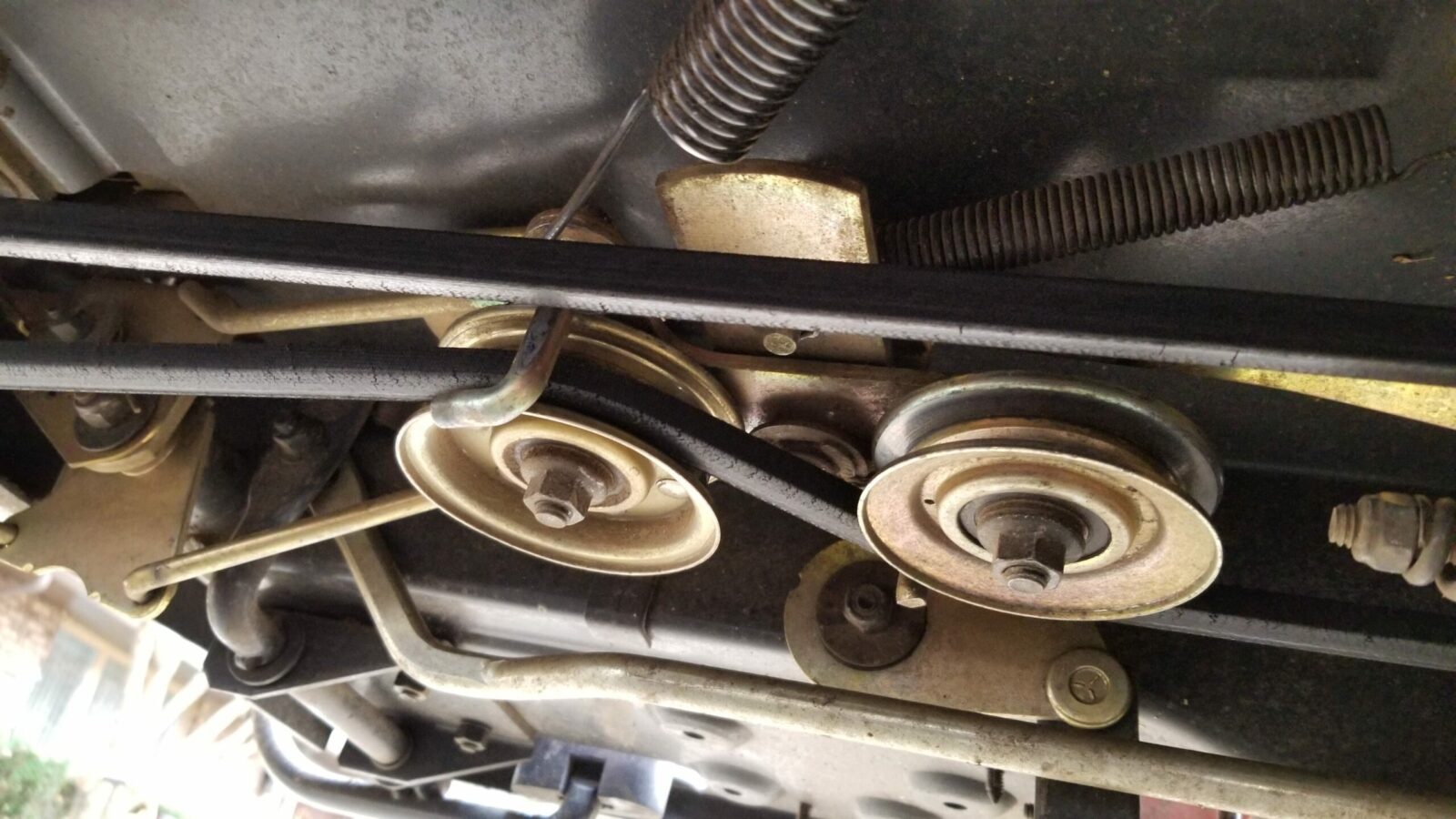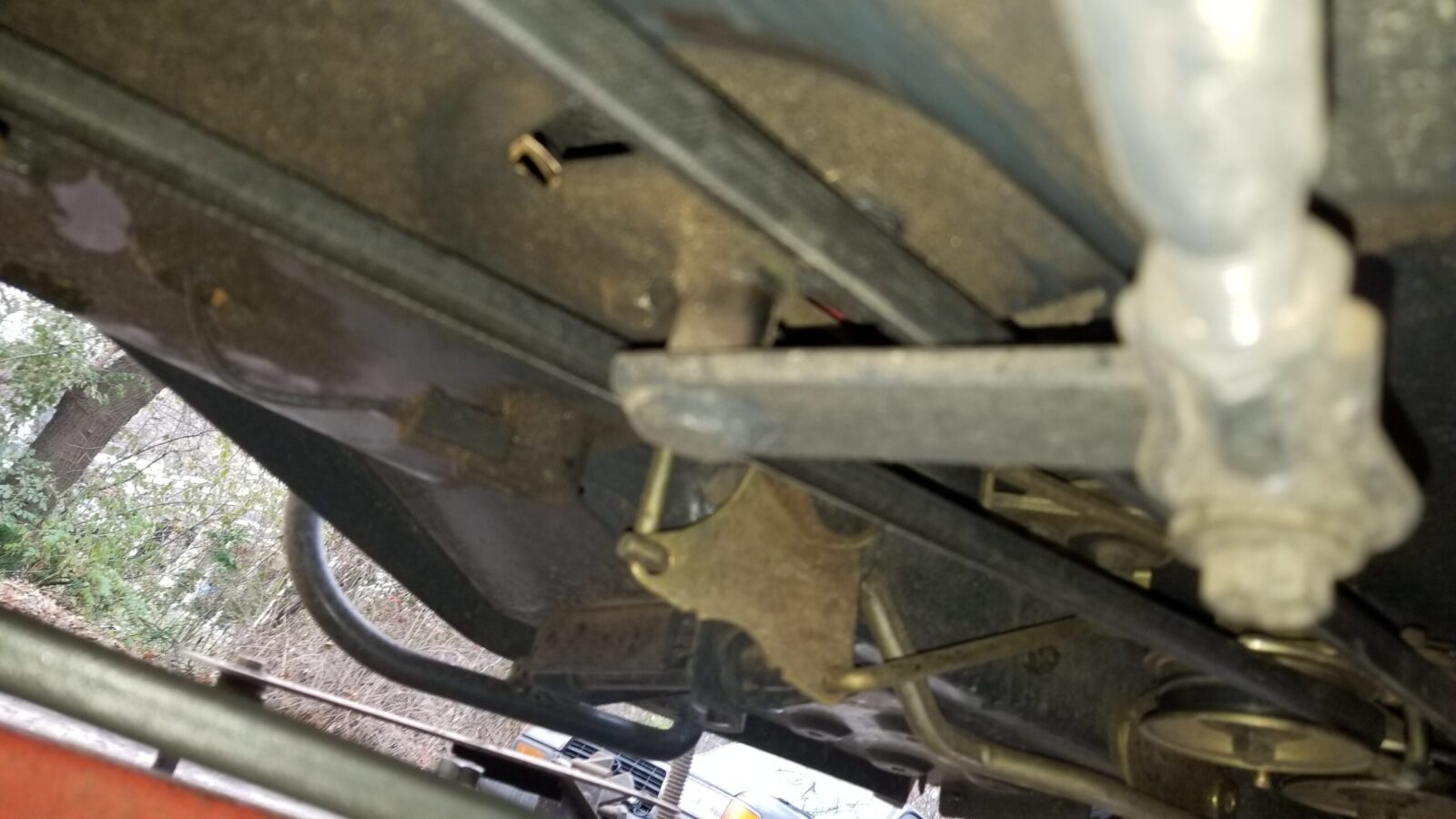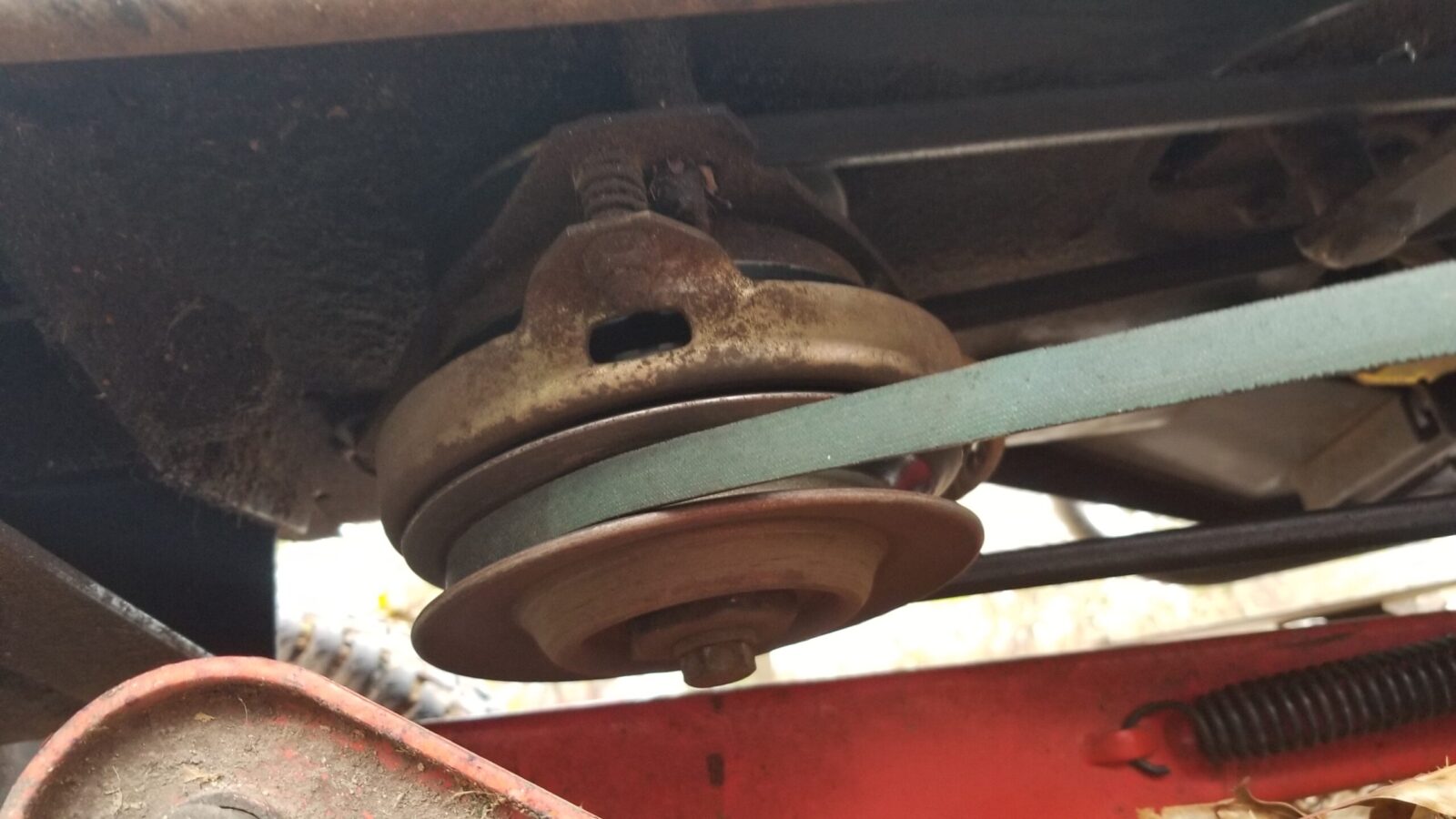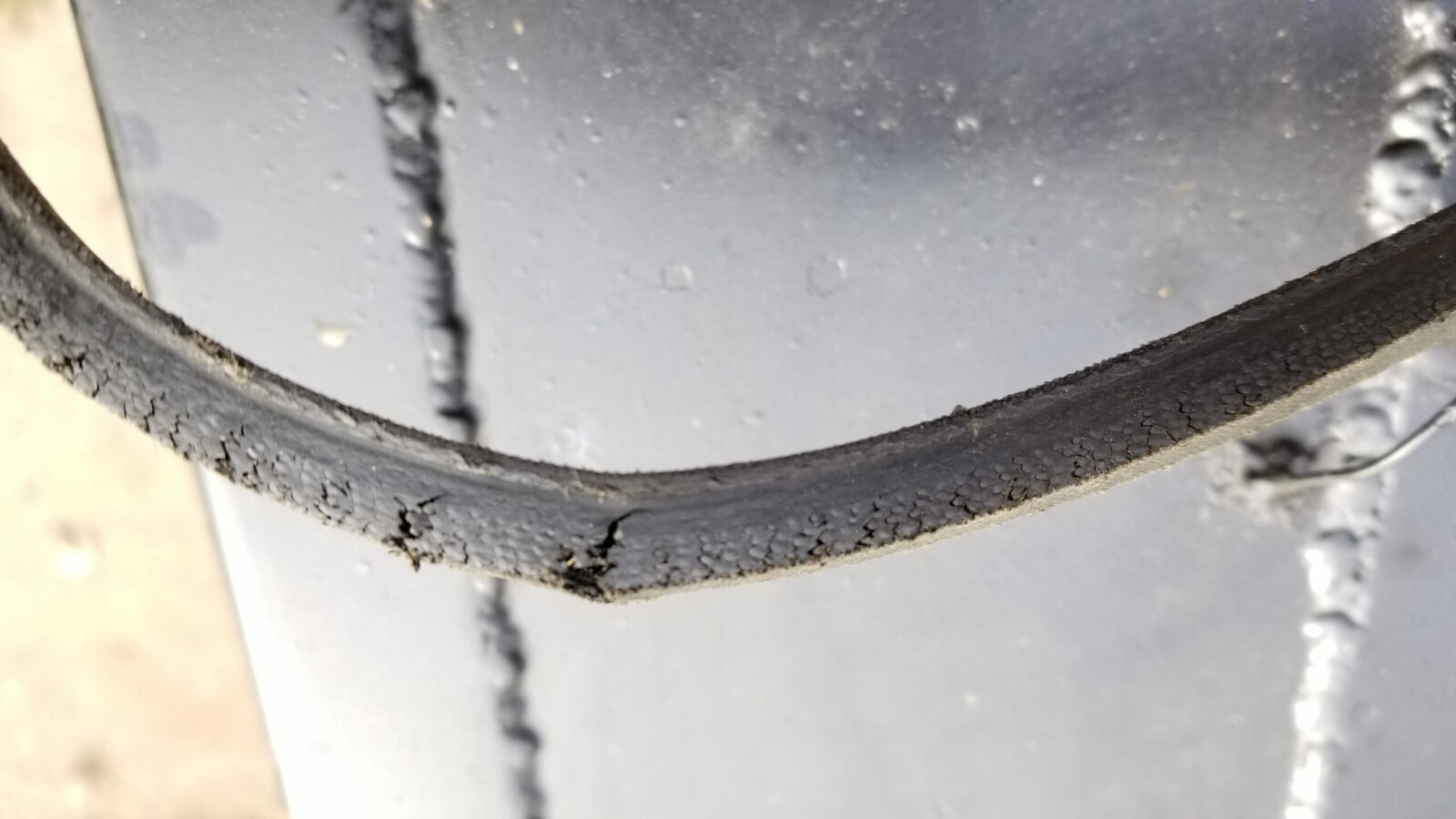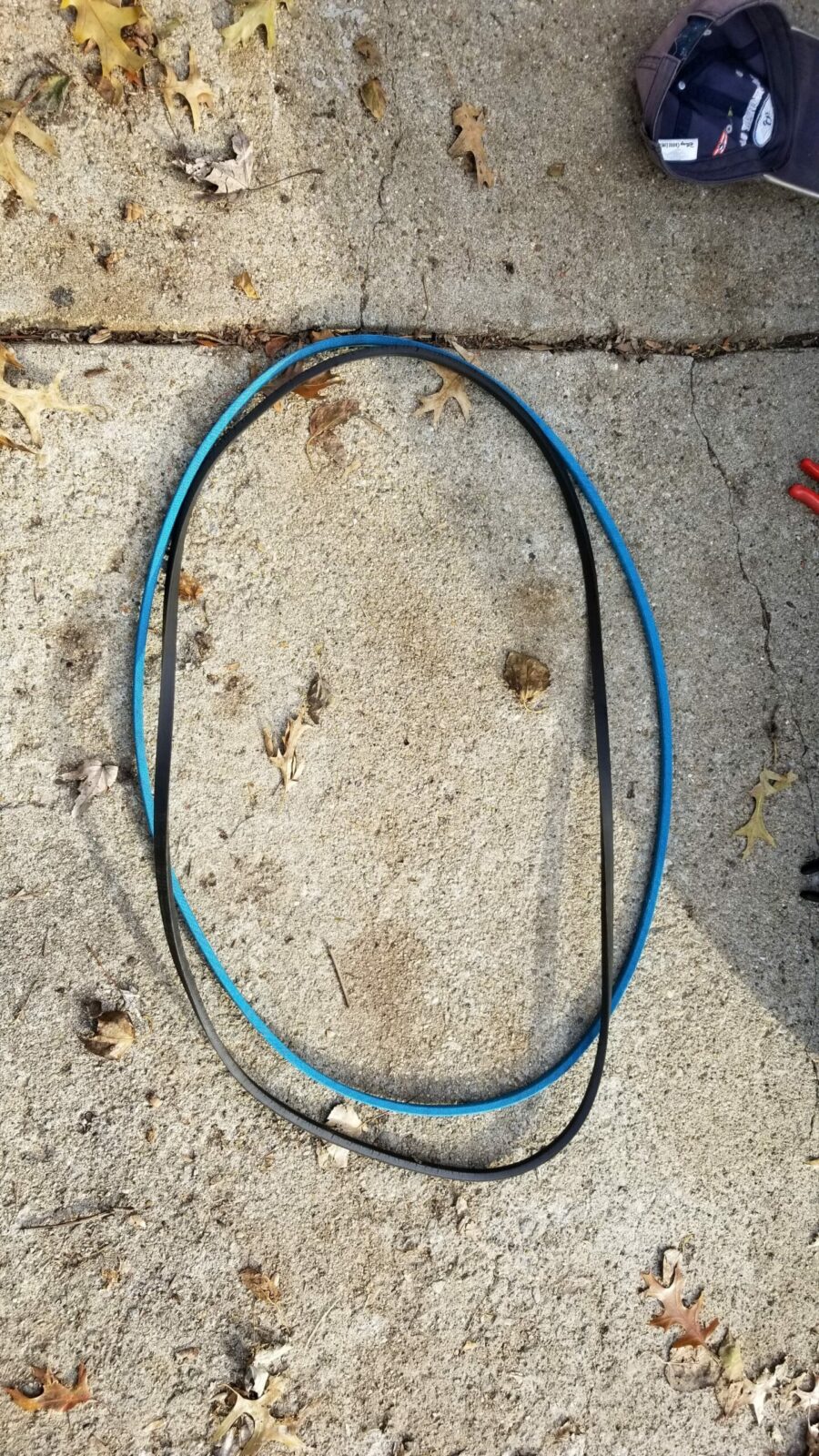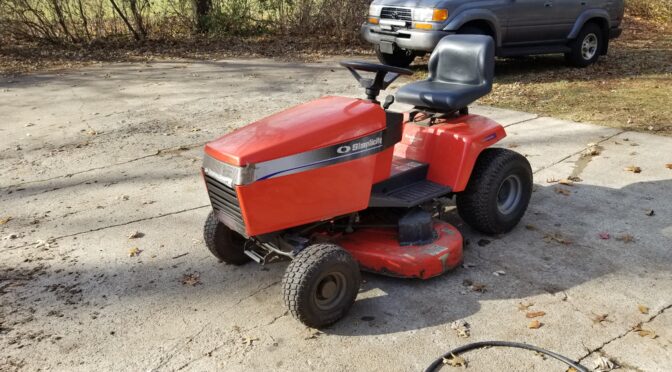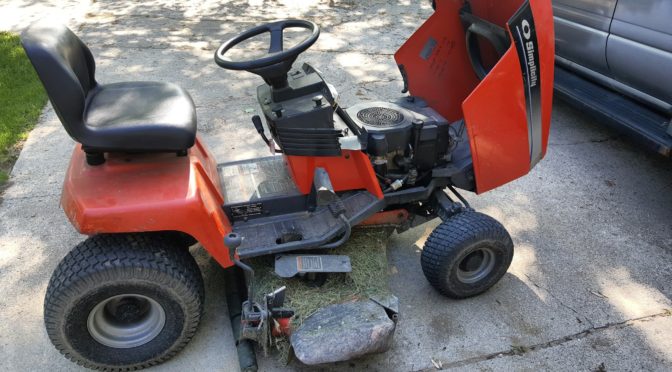If you ever notice that you are trying to push the foot pedal to back up your tractor and it is very slow, then you may have one or two things going on – your transmission could be low on oil or it could be really old and due for a change. How do I know this? Well, I just lived it.
We have a 1998 Simplicity Broadmor tractor with a 42″ deck. It’s been backing up slower and slower for quite some time. When I bought the tractor new, I asked the dealer what I needed to do with the transmission – he said just make sure it has fluid but that’s it because it is sealed. He told me this in 1998 … and it’s now 2023. Yeah, I know now.
What is 10W-30 CD/SG?
Well, I was getting my tractor ready for the season and checked the plastic case and saw a dark shadow at the full mark. I took off the lid and couldn’t see any oil at all – anywhere inside. The cap said “TRANSMISSION OIL FILL 10W-30 CD/SG”? I had no idea what that meant so I called my master auto mechanic friend John up and he told me to put in a good real oil, not synthetic 10W-30.
The CD/SG was the API (American Petroleum Institute) service category. The “S” meant it was for automotive gasoline engines and the “G” code is the engine vintage. SG was introduced in 1989 but is not considered suitable for engines introduced after 1993. Regarding “CD”, the “C” is for automotive diesel engines. “D” means it should not be used in diesels made after 1994. In short, a modern car engine 10W-30 oil would work just fine. The simplicity owner’s manual also states this. It takes about 3.5 quarts.
The Reservoir
As to the dark mark on the plastic reservoir – I guess it is stained now due to age. You sure can’t see the fluid in the container unless you remove the cap. It had probably been low on transmission oil for a long time. I topped it off and it worked like new.
I was so happy about the speed in reverse that I called John. He paused and asked if I ever change my transmission oil. I told him that I hadn’t based on what the dealer told me way back when and he just chuckled “boy, you better drain that transmission or you’re going to have a problem”.
So, I listened to John. I looked up in the manual where the drain plug was at, removed it and out came pitch black oil. Have you ever felt guilty about what you did to a machine? I sure did. Wow.
According to the manual, Simplicity recommended that the oil be changed after the first 50 hours of run time and then every 250 hours after that. Folks, I kid you not, I was at 527.6 hours in the meter. Wow. I felt really bad about putting the tranny though that. I was also amazed that it was still working.
I’m going to show you some photos of what I did. One thing I want to point out to you is to make sure the area around the filler cap is clean. You do not want to get any dirt into the transmission oil tank. I cleaned mine with brake cleaner and then blew it off with compressed air just to be sure. I also used my compressed air to blow the work area clean to reduce the odds of dirt getting in the transmission oil tank. Just remember- getting dirt in a tranny can wreck it.
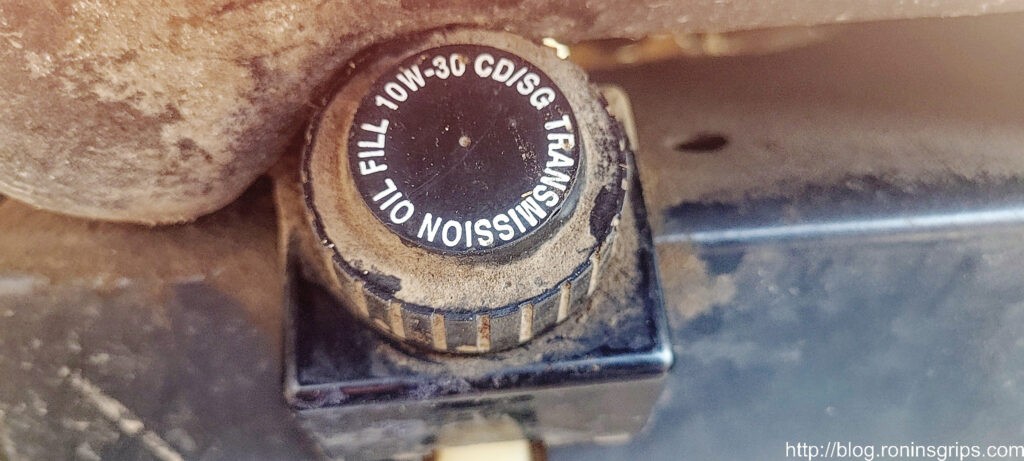
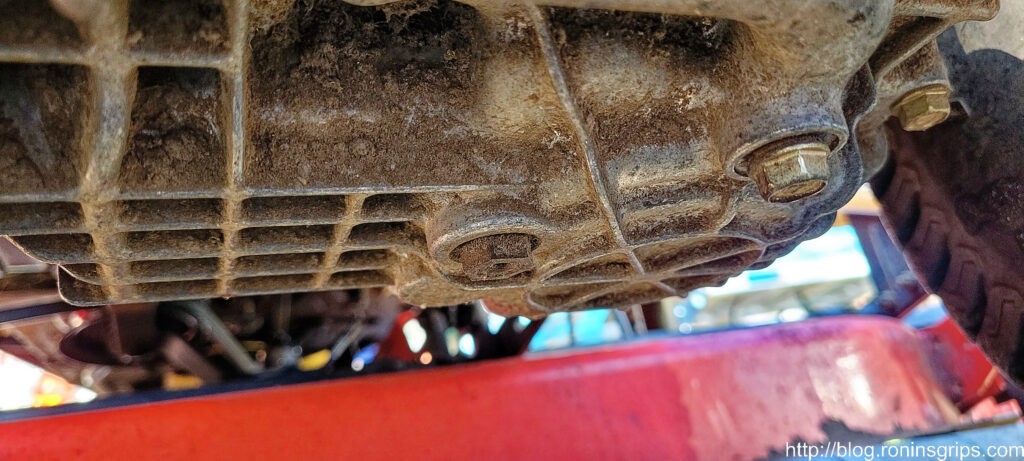
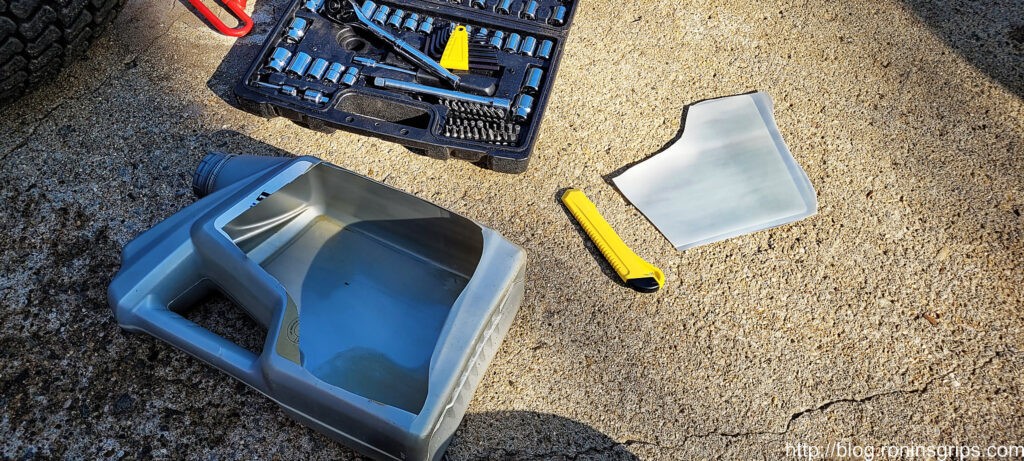
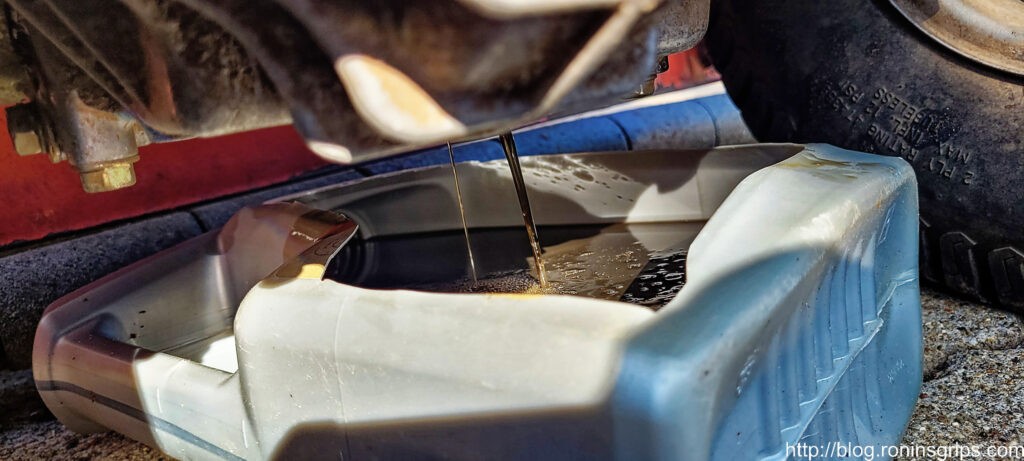
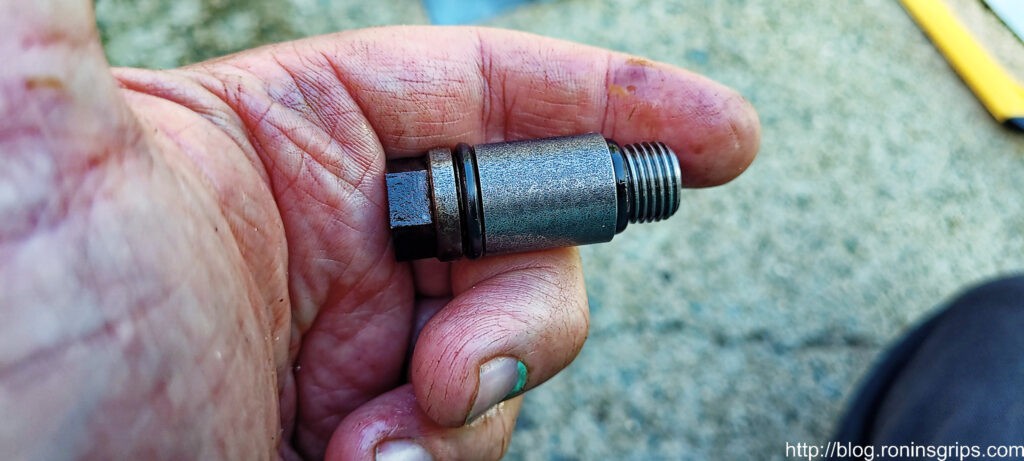
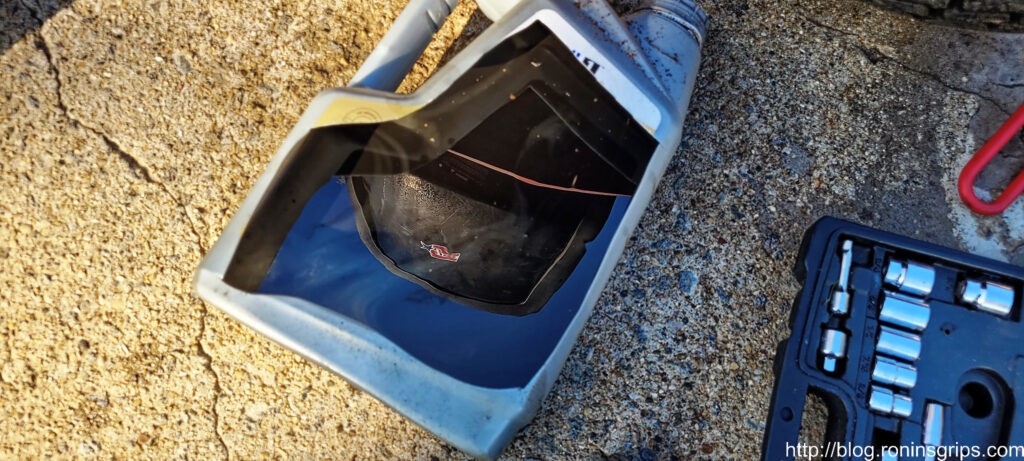
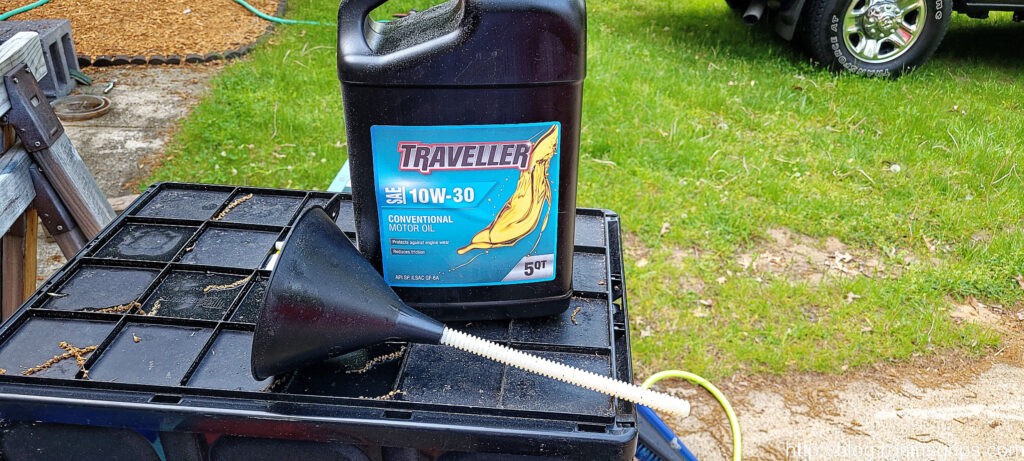
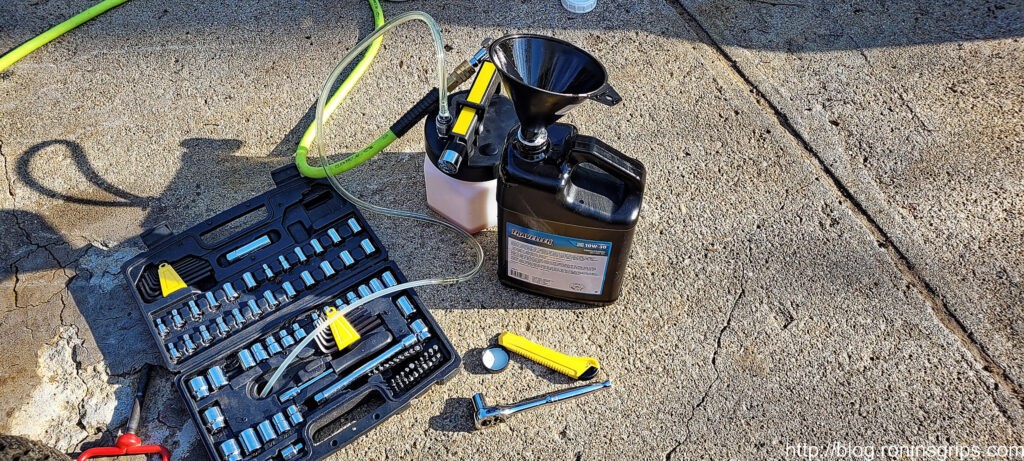
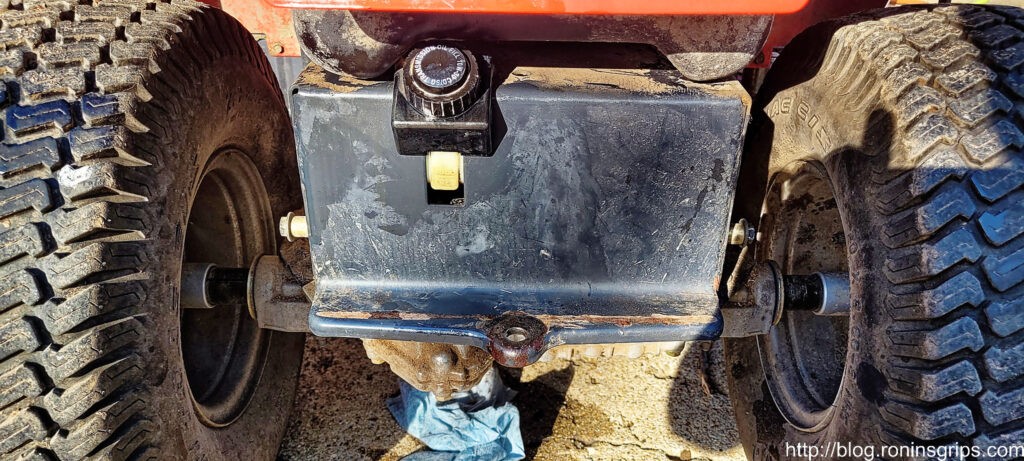
Summary
My big lesson learned was that transmission oil does need to be changed. Luckily I found this out before damaged happened. The symptom that set this all in motion was a very slow/weak reverse gear.
]Also, with this vintage of tractor, that transmission fluid reservoir is not longer semi-transparent. What looks like the fluid level is not so you need to manually check and be sure to blow all of the debris away from the cap before you open it. I thought there was fluid but when I opened it, there was no oil in sight.
Last lesson – use good conventional 10W-30 engine oil for the fluid – it works just fine.
So, after I did this I mowed our 1.5 acre yard and it worked great – no scary sounds, reverse was solid and I would swear it went forward faster. It was totally worth the the half-hour to hour that it took. I spent more time trying to figure out what to do than actually doing it and I hope this post helps you skip some of that.
If you find this post useful, please share the link on Facebook, with your friends, etc. Your support is much appreciated and if you have any feedback, please email me at in**@*********ps.com. Please note that for links to other websites, we are only paid if there is an affiliate program such as Avantlink, Impact, Amazon and eBay and only if you purchase something. If you’d like to directly contribute towards our continued reporting, please visit our funding page.
